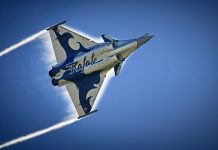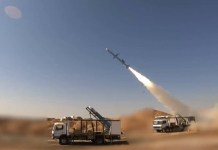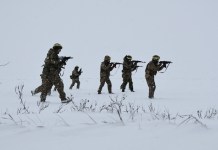On September 12, 2024, the US Air Force announced that its B-2 stealth strategic bomber has conducted bilateral training with Japanese F-35A stealth fighters over the Pacific Ocean. This marks the first-ever joint drill between these advanced aircraft from the two nations.
The exercise took place over the Pacific Ocean as part of ongoing Bomber Task Force (BTF) operations in the Indo-Pacific region.
A B-2 Spirit from the 110th Expeditionary Bomb Squadron, launched from Royal Australian Air Force (RAAF) Base Amberley, Australia, rendezvoused with F-35A stealth fighters from Japan’s Misawa Air Base in the Indo-Pacific region.
This joint operation, conducted on September 10, involved key integration and aerial refueling missions, further enhancing interoperability between the US and Japan’s air forces.
Lt. Col. Justin Meyer, commander of the 110th Expeditionary Bomb Squadron, described the joint exercise as a “significant milestone.”
2024年9月10日、インド太平洋地域上空を編隊飛行する米空軍のB-2スピリット・ステルス爆撃機と航空自衛隊 @JASDF_PAO のF-35AライトニングII 4機。米軍は、安全保障と対応能力を強化するために、世界中の同盟国やパートナーと定期的に協力しています。
(USAF photo by Senior Airman Samantha White) pic.twitter.com/NSh30CkD3M— 在日米軍司令部(USFJ) (@USFJ_J) September 12, 2024
“The opportunity to integrate our B-2 Spirit pilots with the Japan Air Self-Defense Force 5th generation aircraft is a significant milestone for our bilateral integration operations,” said Lt. Col. Justin Meyer, 110th Expeditionary Bomb Squadron commander.
“The advanced capabilities of these aircraft, combined with the strategic prowess of the B-2, enhance our collective readiness and interoperability. This collaboration not only strengthens our defense posture but also underscores our commitment to maintaining peace and stability in the region,” according to Lt. Col. Justin Meyer.
B-21 Raider: U.S. Says Whiteman AFB To Become 2nd Operating Base For U.S Air Force’s Stealth Bombers
In a statement, the JASDF mentioned that the bilateral training aimed to strengthen Japan-US response capabilities and tactical skills.
The JASDF further added that the exercise took place on September 10, 2024, over the Pacific Ocean. It involved four JASDF F-35As from the 3rd Air Wing and Northern Aircraft Control and Warning Wing, along with one B-2 and a KC-135 from the US Air Force.
The US Air Force also released images capturing the B-2 Spirit and JASDF F-35As flying in formation, illustrating the strengthened military partnership and enhanced strategic collaboration between the two nations.
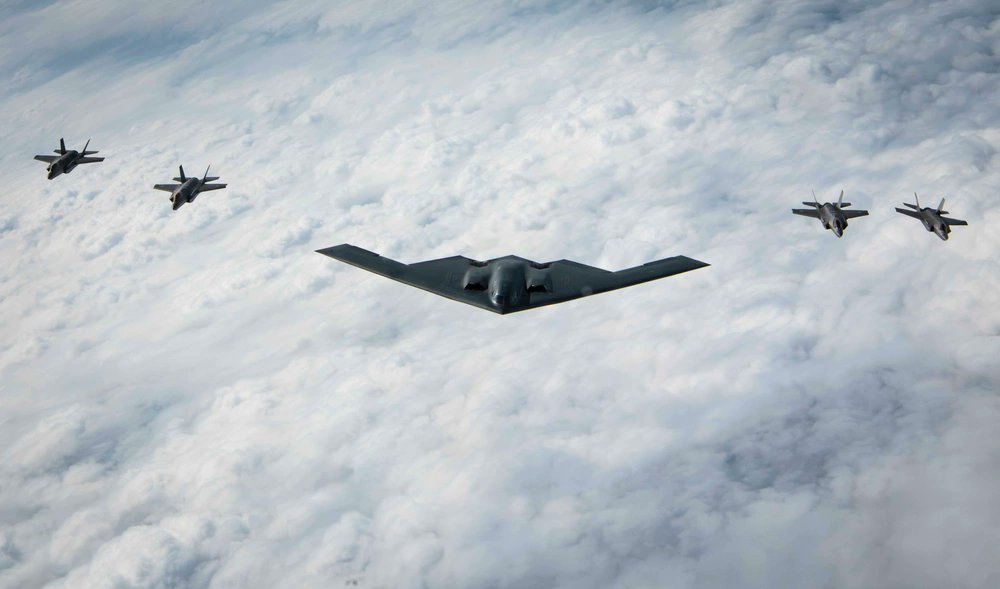
Bomber Task Force Mission In The Indo Pacific
The US Air Force’s B-2 Spirit stealth bombers have been actively conducting Bomber Task Force (BTF) operations in the Indo-Pacific region for approximately three weeks.
The deployment, which began on August 16, 2024, marks the return of these strategic assets to Royal Australian Air Force Base (RAAF) Amberley after a nearly two-year hiatus.
This deployment involved bombers from the 509th Bomb Wing and the 131st Bomb Wing, both stationed at Whiteman Air Force Base, Missouri, accompanied by two KC-135R tankers.
RAAF Base Amberley, situated near Brisbane on Australia’s east coast, previously hosted the B-2s in 2022 for the “Koolendong 22” exercise, where they engaged in joint drills with Australian F-35As.
The current deployment to Australia also holds significant strategic implications. Australia’s role as a potential staging ground in any future conflict with China highlights the importance of these operations.
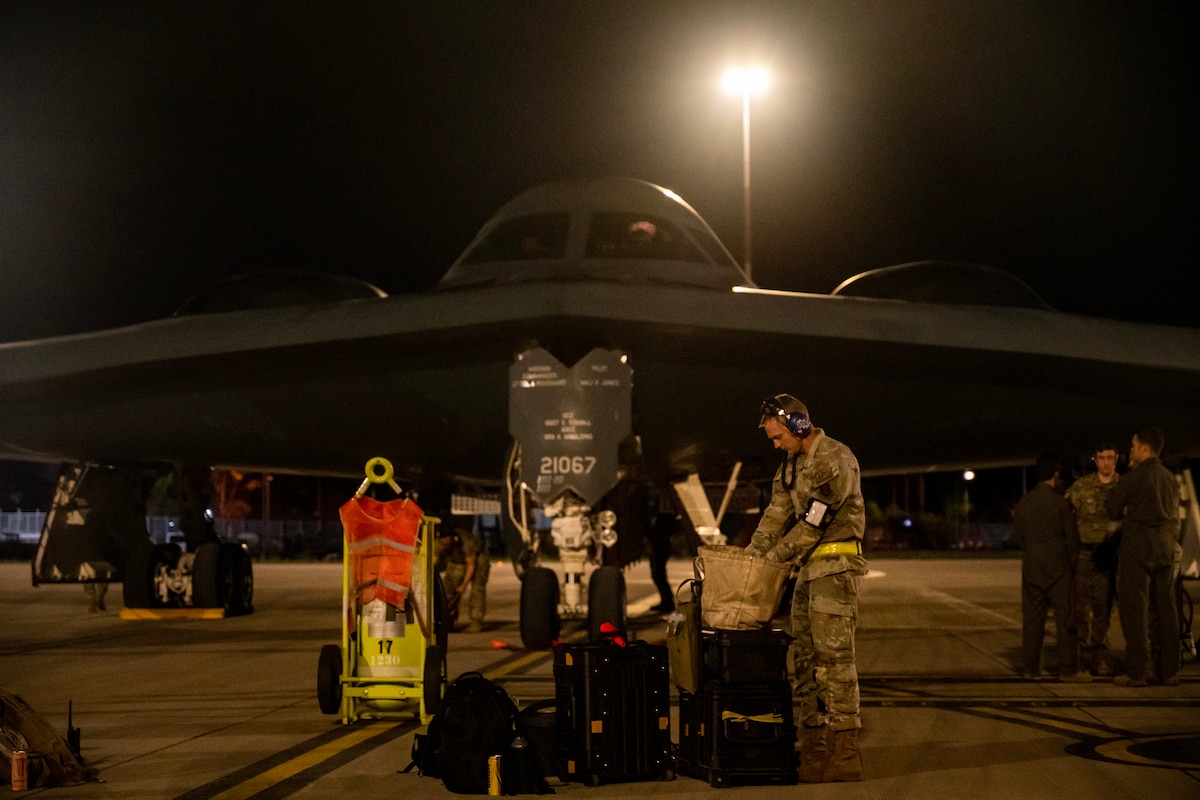
Regardless, this return underscores the US commitment to maintaining a robust presence and readiness in the Indo-Pacific region. These operations demonstrate the ability to address the complex and evolving security environment.
The US Air Force said, “These operations showcase the United States’ commitment to train alongside allies and partners in order to build interoperability and bolster a collective ability to support a free and open Indo-Pacific.”
In early September, the US Pacific Air Forces (PACAF) shared on social media that a B-2 Spirit bomber had executed a precision bombing drill at RAAF Base Amberley. The drill was part of a broader strategy to showcase the B-2’s operational flexibility and advanced capabilities.
The B-2 Spirit, renowned for its stealth capabilities, long-range strike potential, and precision armament, is a key component of the US’s strategic arsenal.
It is one of the only three types of bombers still equipped with nuclear gravity bombs, reflecting its advanced status within the US inventory. The B-2A Spirit also became the first USAF aircraft to be armed with the B61-12 nuclear bomb, further enhancing its strategic significance.
During the current BTF mission, the B-2s also conducted hot pit refueling at RAAF Base Amberley last month. This technique, which allows an aircraft to land, refuel, and take off without shutting down its engines, is crucial for maintaining operational readiness and flexibility during these operations.
In June 2024, B-2 Spirits also made headlines when they landed in Guam for the first time since 2019. This deployment was seen as a response to rising tensions with China and underscored Guam’s strategic importance as a forward base for US bombers and fighters.
That being said, while the USAF stressed that the B-2’s deployment is primarily for deterrence, the increased presence in Australia aligns with broader efforts to bolster regional security.
- Contact the author at ashishmichel(at)gmail.com
- Follow EurAsian Times on Google News

